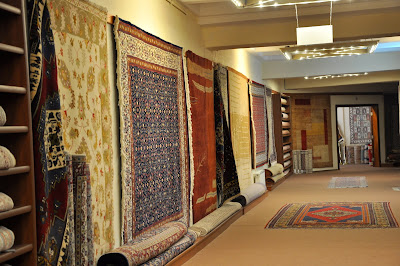 |
| The front view of Eyub Mosque |
 |
| The front door to the mosque |
This time I am determined to visit Eyub Sultan Cami, not just for its amazing architectural delight but also for its historical values. From the bus station near Galata bridge, we took bus No.99 to get to Eyub precinct. The bus fare is very cheap, about 3 lira for a return. They won't take money on the bus so you need to buy the ticket from a booth near the fish restaurants. It is a nice feeling to get on the bus because it gives a different feel to be among the locals. The 15 minutes drive along the Golden Horn was very scenic. We asked the driver to stop us near the mosque and he nodded upon hearing the word Eyub Sultan Cami.
 |
| In Solitude |
Abu Ayyub al-Ansari was a close companion of Prophet Muhammad (peace be upon him). He was an Ansar with whom the Prophet stayed upon arriving in Medina in 622. The mosque is built in honor of Eyub who fell ill, had to withdraw and passed away during the battle in Constantinople. His last wish was conveyed to Yazid and he requested to be buried at the walls of Constantinople.
Ironically, after he was buried outside the walls, his tomb was venerated by the Byzantine. In 1453, Mehmet the Conqueror besieged Constantinople and he built a grand tomb and a mosque on the site of Eyup burial ground. The 1766 earthquake destroyed the building and on the same site Sultan Selim III constructed a new mosque in 1800. This is Eyub Sultan Cami that we see today.
The mosque is frequently visited by foreigners and locals, Muslims and non-Muslims. We arrived in the early morning and there was much lesser crowd than it used to be. The surrounding was very peaceful and as we approached the interior of the mosque...Masyallah, it is such a beautiful mosque. It gives a sense of tranquility and inner peace!
 |
| The interior |


























































